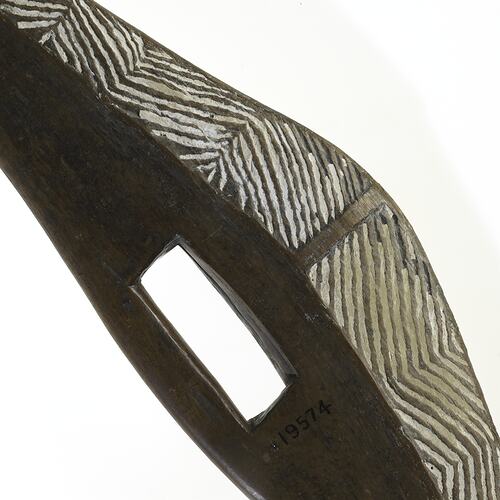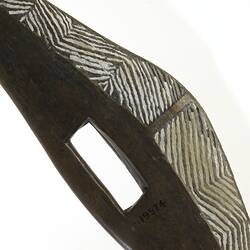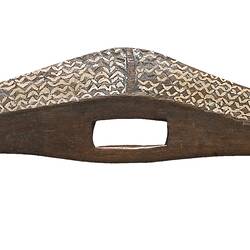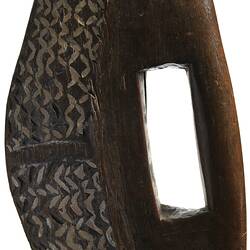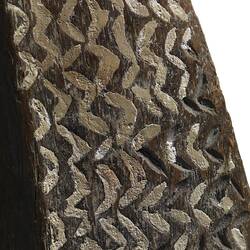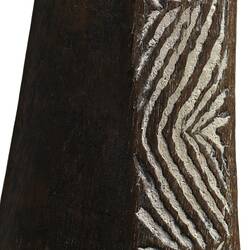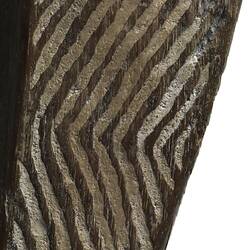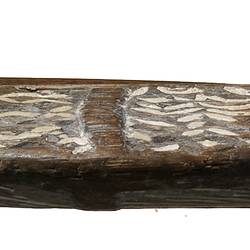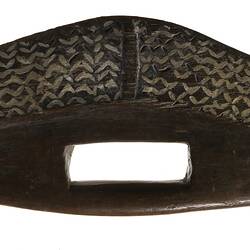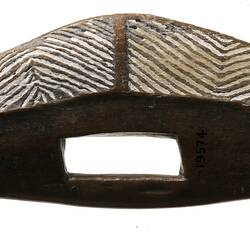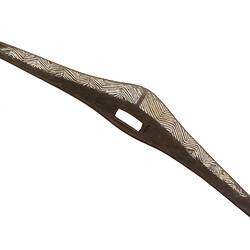Summary
These distinctive narrow shields are known as parrying shields used to deflect spears and wooden clubs in combat. The designs on the shields were meant to be visually arresting with dexterous combatants able to use them to create distracting optical illusions in battle. Tools made of stone and animal teeth like the sharp teeth of a marsupial were used to shape the shields and engrave the designs onto the face. Shields could also be regarded as having innate power and older shields used in many successful battles were prized objects of trade. The piece of possum fur wrapped around the middle is designed to protect a man's knuckles during a fight. The history of 'ownership' of such objects between leaving the possession of Aboriginal people and becoming part of Museums Victoria collections is diverse and often obscure. Early collectors acquired objects such as these because it was believed that Aboriginal people were 'a dying race'. This belief and the growing interest in ethnography created a very active trade in Aboriginal objects from the mid-nineteenth century onwards.
Physical Description
An elongated ellyptical shield with tapering ends made from a single piece of hardwood. It is painted with natural pigments. The concave outer surface is incised with a linear pattern on one side and small curved designs on the other. The incising is infilled with white pipe clay. The handle is carved out on the reverse side.
More Information
-
Object/Medium
Shield
-
Maker
-
Locality
-
Date Produced
-
Date Collected
-
Object Measurements
870 mm (Length), 120 mm (Width), 25 mm (Height)
-
Keywords
-
References
[Book] Museum Victoria. 2004. Treasures of the Museum. Victoria, Australia. 206.
-
Acquisition Information
Bequest from John H. Connell, Feb 1914
-
Collection Names
-
Type of item
-
Discipline
-
Category
-
Collecting Areas
